
TOYOTA EAGLE AAR HF89 MKII [Vendu]
Les services + de Classic Racing
Bientôt disponible

Bientôt disponible
A votre service depuis 1995, Transfret c’est avant tout le respect des collaborateurs et des clients.
Pour transporter de 1 à 6 voitures partout en Europe, contactez nous sur www.groupe-transfret.com
La série de courses IMSA GTP est souvent considérée comme le summum des courses de prototypes. Les équipes devaient élaborer des voitures efficaces à partir d’un ensemble de règles leur permettant d’exploiter toutes les lacunes de l’ingénierie, ce qui aboutissait souvent à des conceptions radicalement différentes les unes des autres.
All American Racers (AAR) une équipe menée par Dan Gurney peu être considérée comme la meilleure équipe américaine. Elle a remporté le championnat IMSA GTO avec des Toyota Celicas conçue et construite par ses soins. Souhaitant démontrer le potentiel de ses produits, c’est tout naturellement qu’elle s’est tournée vers AAR pour la mise au point de leur nouvelle création la HF89.
L’ingénieur Ron Hopkins et l’aérodynamicien Hiro Fuhimori qui étaient chargés de relever le défi monumental en matière de conception de la voiture GTP lui ont donné son nom en utilisant leurs initiales. la voiture a été officiellement baptisée HF89, puis HF90, mais elle était également connue sous le nom de Toyota GTP MKII.
De conception classique, la GTP MKII a été construite autour d’une monocoque en aluminium dotée d’un noyau en nid d’abeille pour le renforcement et d’un châssis extrêmement rigide. Un sous-châssis arrière séparé a été utilisé pour monter le moteur et la boîte de vitesses. Les suspensions étaient des doubles triangles suspendus aux quatre coins, les ressorts et les amortisseurs étant montés presque à la verticale pour laisser la place aux tunnels à effet de sol situés sous la voiture.
Le seul moteur disponible de Toyota était le moteur 2 en ligne 4 de 2 140 cc, le même moteur qui avait fait ses preuves dans les Celica GTO du championnat. Basé sur un bloc de production, il comportait deux arbres à cames en tête et quatre soupapes par cylindre. Il produisait initialement plus de 600 chevaux, tout en étant couplé à une boîte de vitesses manuelle à cinq vitesses Hewland.
AAR a engagé Juan Manuel Fangio II pour piloter la HF89, mais la saison 1989 s’est vite transformée en saisson de mise au point et de fiabilisation. Le travail de l’équipe a porté ses fruits puisque Fangio a décroché la pole position et remporté la première victoire GTP pour Toyota contre la Nissan de Geoff Brabham à Heartland Park, au Kansas. Il allait plus tard aussi gagner à Sears Point, à San Antonio et à Del Mar, terminant cette saison. HF89 au deuxième rang.
Depuis sa mise à la retraite l’AAR HF89, a été conservée dans différentes collections.
Dennis Aase, un vétéran des courses de Toyota de l’AAR, a acheté la voiture à l’équipe et lui redonné sa livrée gagnante du Topeka. Il l’a ensuite exposée au Museo Fangio de Balcarce, en Argentine, en tant que pièce maîtresse. Durant cette période, la voiture est restée dans un état de préservation impeccable, mais non opérationnel.
Elle a été ensuite cédée en 2015 à son nouveau propriétaire, qui a chargé Canepa de sa restauration avec comme objectif de rétablir ses spécifications d’origine de l’AAR / Toyota Eagle MKII, de la remettre en état de course pour qu’elle puisse participer à une course historique. Ce qui fut fait dans les règles de l’art. Une fois la restauration terminée, cet AAR Eagle MKII HF89 est devenue l’un des meilleurs bolides GTP restaurés des temps modernes.
La voiture a été intégralement démontée, inspectée de toutes parts. Toutes les pièces ont été inventoriées. Lors de l’inspection des panneaux intérieurs, nous avons retrouvé des gribouillis de membres de l’équipe écrits lors de la construction de la voiture. Il y avait même un porte bonheur attaché au bas du châssis sous le siège du conducteur…. Tous ces ses souvenirs ont été sauvegardés lors de la restauration et restent présents sur la voiture aujourd’hui.
Le démontage étant complètement terminé, la phase deux du processus de restauration a débuté. Tous les composants de la suspension ont été vérifiés, réhabilités et assemblés avec du nouveau matériel. Le système de freinage a été reconstruit.
Le moteur a été envoyé chez Advanced Engine Research of Essex, en Angleterre pour être reconstruit dans sa version GTP de 1989 et 1990. Une fois construit, il a été rodé conformément aux spécifications, puis ré-expédié à Canepa. Lorsque le réglage final a été achevé chez Canepa, le moteur turbocompressé de 2,1 litres est passé au banc ou il a affiché la puissance stupéfiante de 815 chevaux et un couple de 614 lb / pi.
La carrosserie en composite de carbone à forte force d’appui a été restaurée avec précision conformément aux spécifications d’origine. Les panneaux de carrosserie en composite de carbone ont été soigneusement ajustés, puis elle a reçu la livrée qu’elle portait en 1990.
Depuis l’achèvement de l’Eagle MKII, le client a participé au Rolex Monterey Motorsports Reunion 2017, au Monticello Art in Motion Concours 2017 et au Rolex Monterey Motorsports Reunion 2018.
Elle vient avec son passeport FIA en cours de validité qui lui permet de participer aux épreuves du Groupe C en Europe ainsi qu’aux épreuves historiques américaines, cette AAR / Toyota Eagle MKII est éligible à presque toutes les épreuves de course de collection.
Construit par une équipe légendaire composée d’AAR et de Toyota, pilotée par le non moins légendaire Juan Fangio II, entièrement restaurée et préparée par Canepa, cette Toyota Eagle MKII HF89 fera naitre sur votre visage un énorme sourire à chaque virage.
![]() For sale, 1989 AAR-Toyota Eagle HF89 “MKII”
For sale, 1989 AAR-Toyota Eagle HF89 “MKII”
IMSA’s GTP racing series is considered by many the height of prototype racing. Teams were required to come up with inspired designs from sets of rules that had them exploit every engineering loophole, often times resulting in designs that were radically different from one another. All American Racers (AAR) led by Dan Gurney were the premiere American team, having successfully won the IMSA GTO championship in their AAR-designed-and-built Toyota Celicas. Looking to go full bore and reign king of IMSA GTP, Toyota gave the green light and both AAR and Toyota began development on their newest creation, the HF89.
Tasked with the monumental design challenge of the GTP car was engineer Ron Hopkins and aerodynamicist Hiro Fuhimori. Using their initials, the car was officially named the HF89 and subsequently the HF90, but also known as the GTP MKII as it was Toyota and AAR’s second GTP design. Key in design of the day, the GTP cars focused on ground-effect aerodynamics which AAR had extensive experience with from the team’s Indy cars, also designed by Hopkins.
Conventional in design, the GTP MKII was built around an aluminum monocoque which featured a honeycomb core for reinforcement and produced an extremely rigid chassis. A separate rear subframe was used to mount the engine and gearbox. Suspension were double wishbones on all four corners, with the springs and dampers mounted almost vertically to make room for the ground-effect tunnels underneath the car.
The only engine that Toyota had available was the 2,140cc inline-4 engine, the same successful engine that was used in the championship Celica GTOs. Based on a production unit, it featured twin overhead camshafts and four valves per cylinder. It initially produced over 600 horse-power, while being mated to a Hewland five-speed manual gearbox.
AAR signed Juan Manuel Fangio II to pilot the HF89, but the 1989 season proved to be a harder task than originally envisioned due to the boosted Toyota engine’s reliability. During the offseason that year, AAR worked tirelessly to modify the carbon-composite bodywork to increase engine cooling. The work paid off big time, with Fangio nabbing the pole position and taking the first GTP win for Toyota vs. Geoff Brabham’s Nissan at Heartland Park in Kansas. He would later go on to win at Sears Point, San Antonio, and Del Mar, finishing second place overall for that season. HF89 would race again with Fangio early in the 1991 season when he won at Watkins Glen before the new MKIII racer was ready later in the season. However, the car’s driving was not done, as it was then passed from Fangio to Rocky Moran.
Since AAR retired HF89, it remained well preserved during its time in different collections. AAR Toyota racing veteran Dennis Aase bought the car from the team and later had it refinished to its Topeka-winning livery. It was later displayed at the Museo Fangio in Balcarce, Argentina, as a showpiece. During its time spent away from the track, the car remained in a preserved yet non-running condition.
2015 marked the beginning of HF89’s long journey to its original GTP glory. Purchased by a client, Canepa was charged with the restoration to return the AAR/Toyota Eagle MKII back to its original specifications, restored to race condition and ready for historic racing. A 100% mechanical and cosmetic restoration took place that was period correct, fully sorted, and fully tested to provide an unparalleled experience for historic racing. Canepa embarked on the 2-year restoration, leaving no stone unturned, no surface untouched and every system restored. Upon completion, this AAR Eagle MKII HF89 became one of the finest restored GTP racecars in modern times.
The Eagle’s carbon-composite bodywork was removed from the body and placed to the side to inspect the inner workings of the chassis and its components. The suspension pieces were disassembled to allow better access to the inner workings of the chassis, with all parts catalogued during the disassembly. The engine, gearbox and rear subframe were unmated from the car, revealing what was now a bare aluminum monocoque. Underneath all of the inner panels were scribblings from team members who wrote down notes and messages during the building of the car. There was even a lucky quarter attached to the bottom of the chassis underneath the driver’s seat. These team mementos were saved during the restoration and remain on the car today.
With disassembly completely finished, phase two of Canepa’s prodigious restoration process began with the refinishing of every component on the car down to the last bolt. The aluminum monocoque was sanded and polished by hand with ultra-fine sandpaper, returning the surface finish to a gleaming clean surface. The integrated roll bar was refinished in black, and new rear firewall material was added to complete the monocoque. All suspension components were crack checked, refinished, and assembled with new hardware. The brake system was rebuilt, and new brake rotors were installed. Every surface on the vehicle was refinished in the proper surface finish, from paint to powder coat to anodizing. The transmission was rebuilt in house at Canepa, inspecting and replacing all components that needed servicing. In all, every system on this legendary GTP car was inspected, serviced or refinished as necessary, ensuring that everything was in proper working order.
The powerhouse of an engine was sent out to be rebuilt by best in the business, Advanced Engine Research of Essex, England. They were tasked with rebuilding the 2.1-liter turbocharged engine back to its original GTP-making power levels of 1989 and 1990. They fully inspected the stout powerhouse, tearing down the engine to each individual component to inspect it further. With an engine that is dependent on tight tolerances and is being pushed to the limit such as this, Advanced Engine Research spent their time and did their due diligence to ensure the engine performed flawlessly. Once the engine was built, it was thoroughly dyno tested and broken in according to the proper specifications, then shipped to Canepa to be installed into the Eagle. When final tuning was completed at Canepa, the 2.1-liter turbocharged engine produced a staggering 815 horsepower and 614lb/ft of torque (corrected at crank).
The carbon-composite high downforce bodywork was expertly repaired back to its original specifications with the Eagle receiving a true concours-level bodywork and paint process. The carbon-composite body panels were thoroughly adjusted and massaged to fit better than they ever have, and with the panels painted in white they were ready to accept the livery that the car sported in 1990. Countless vintage photographs were consulted to ensure that the livery placed on the car was accurate down the inch. Canepa even consulted with the All American Racers archives for unpublished photographs which allowed greater reference for period correctness. As you see the car today is how the car looked in 1990.
Since the completion of the Eagle MKII, the client revealed the restoration and participated in the 2017 Rolex Monterey Motorsports Reunion, 2017 Monticello Art in Motion Concours, and the 2018 Rolex Monterey Motorsports Reunion. With current FIA papers that hold it eligible to race in Group C classes in Europe as well as U.S. historic events, this AAR/Toyota Eagle MKII is eligible in almost all vintage race events. With massive power on tap, built by a legendary team effort of AAR and Toyota, driven by the true legend Juan Fangio II and fully restored and race prepped by Canepa, this 1989 AAR/Toyota Eagle MKII HF89 is a GTP car will leave you grinning after every corner, straightaway and concours.
Disclaimer: The above vehicle information is complete and accurate to the best of our knowledge at the time it is posted to this website. Corrections or additional information is always appreciated. All advertised prices exclude government fees and taxes, any finance charges, any dealer document preparation charge, and any emission testing charge. Vehicles are subject to prior sale. All advertised to be true but not guaranteed. We assume no liability for errors or omissions.
Passeports techniques
| Passeport | ASN | Numéro | Extrait |
|---|---|---|---|
| Passeport technique international (PTH) |  |
Les dernières annonces de CANEPA
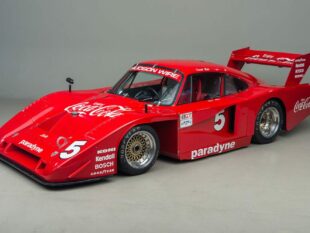
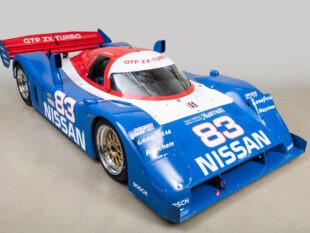
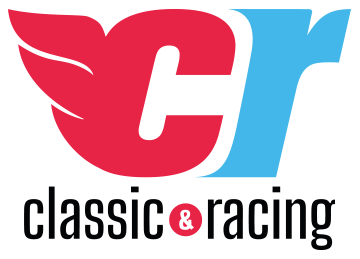
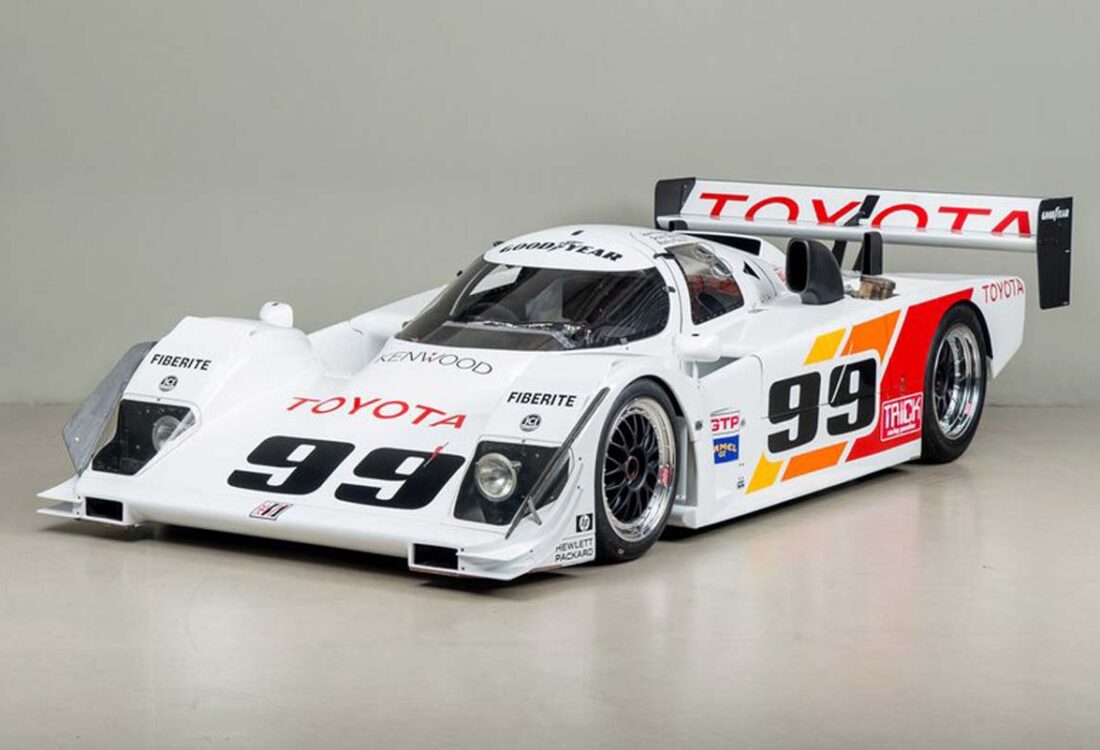
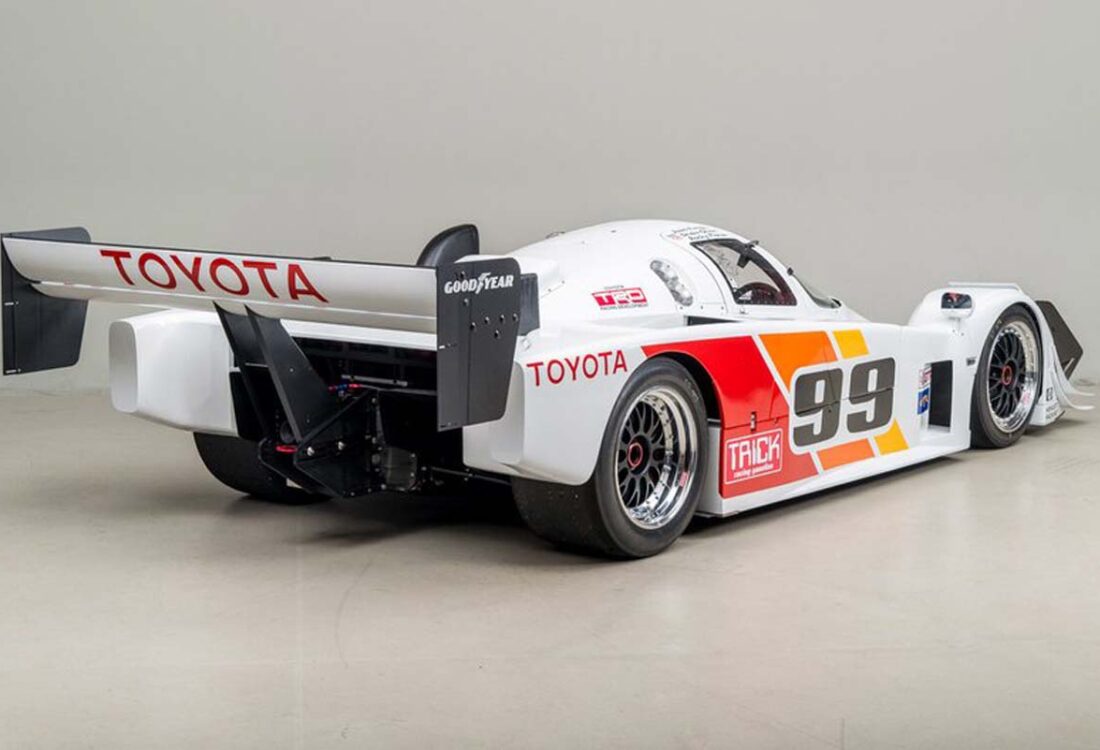
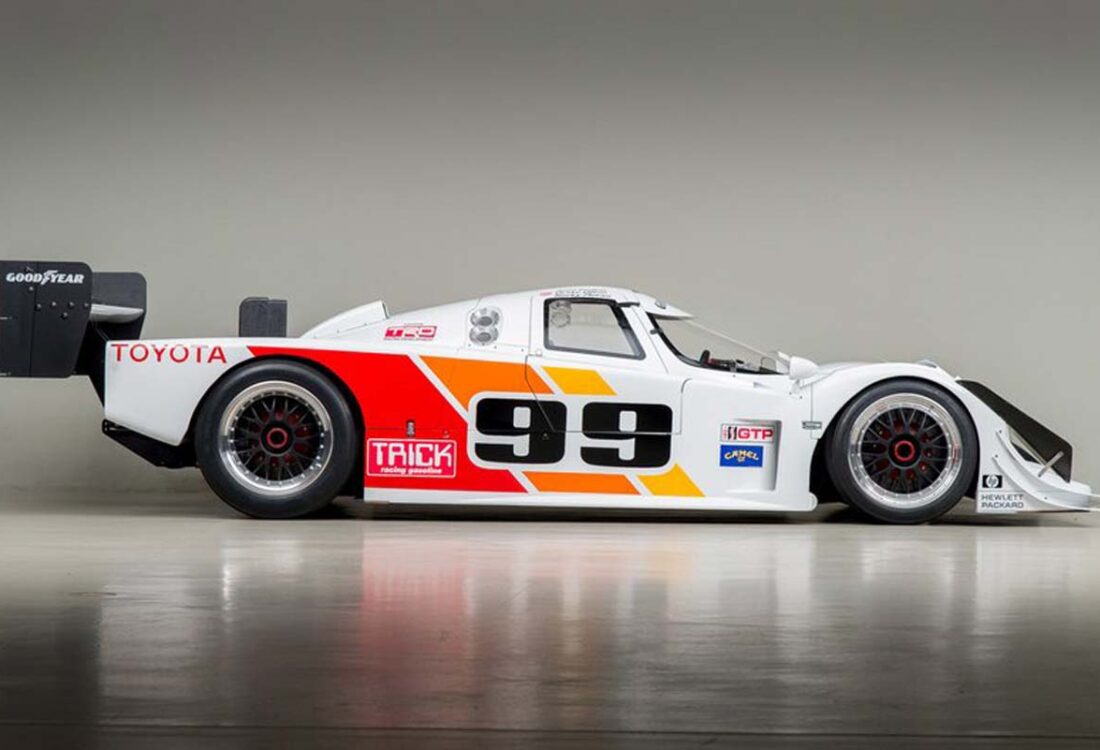
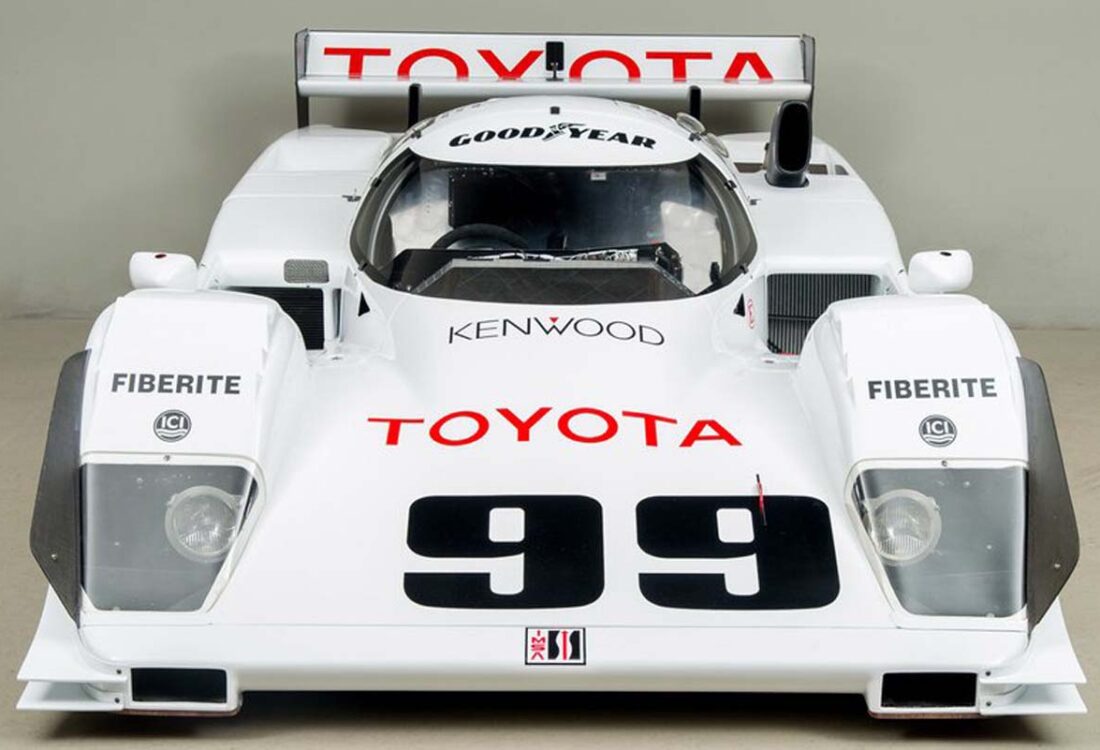
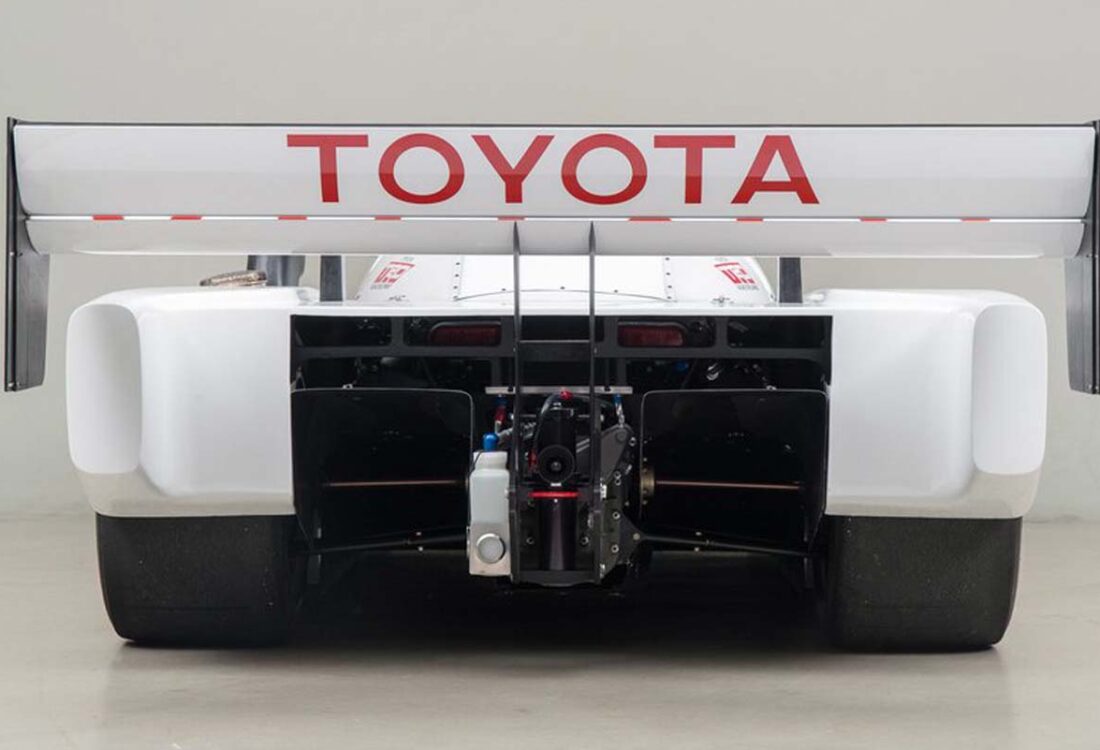
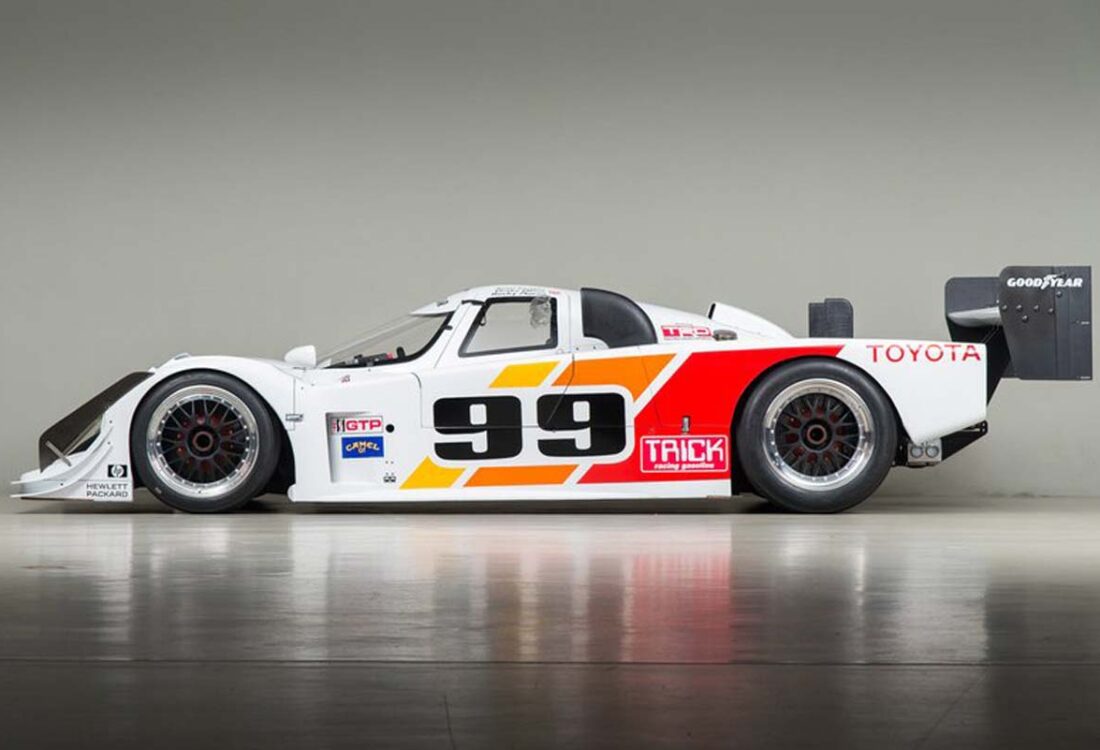
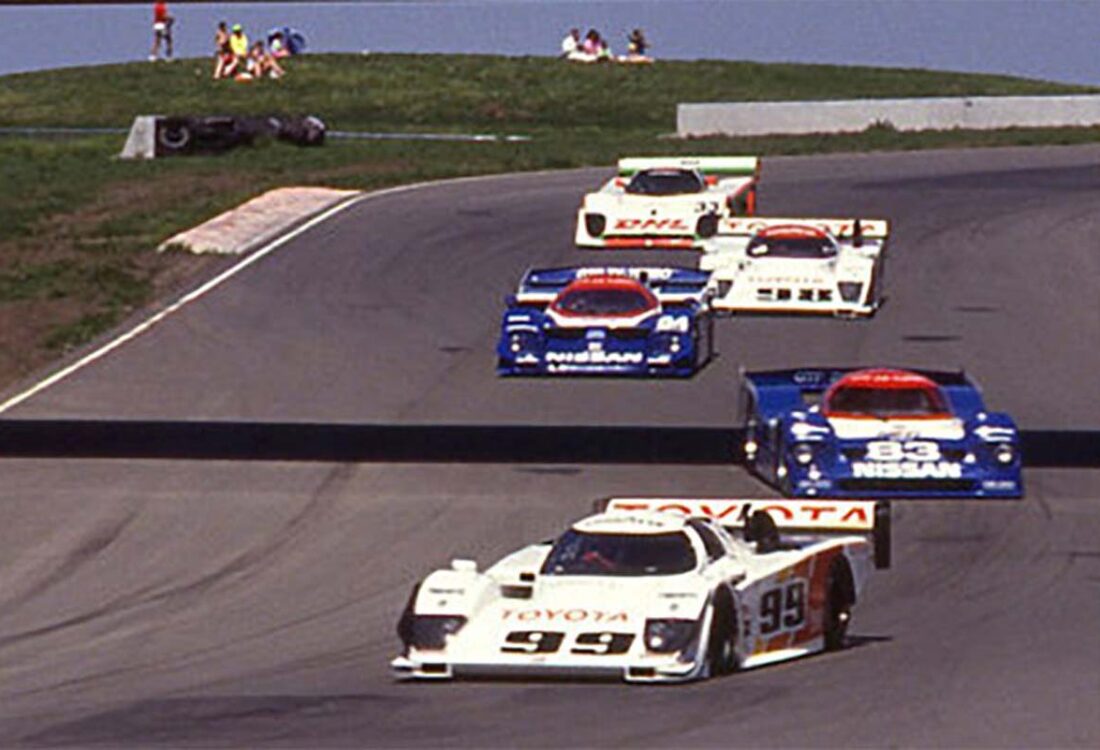
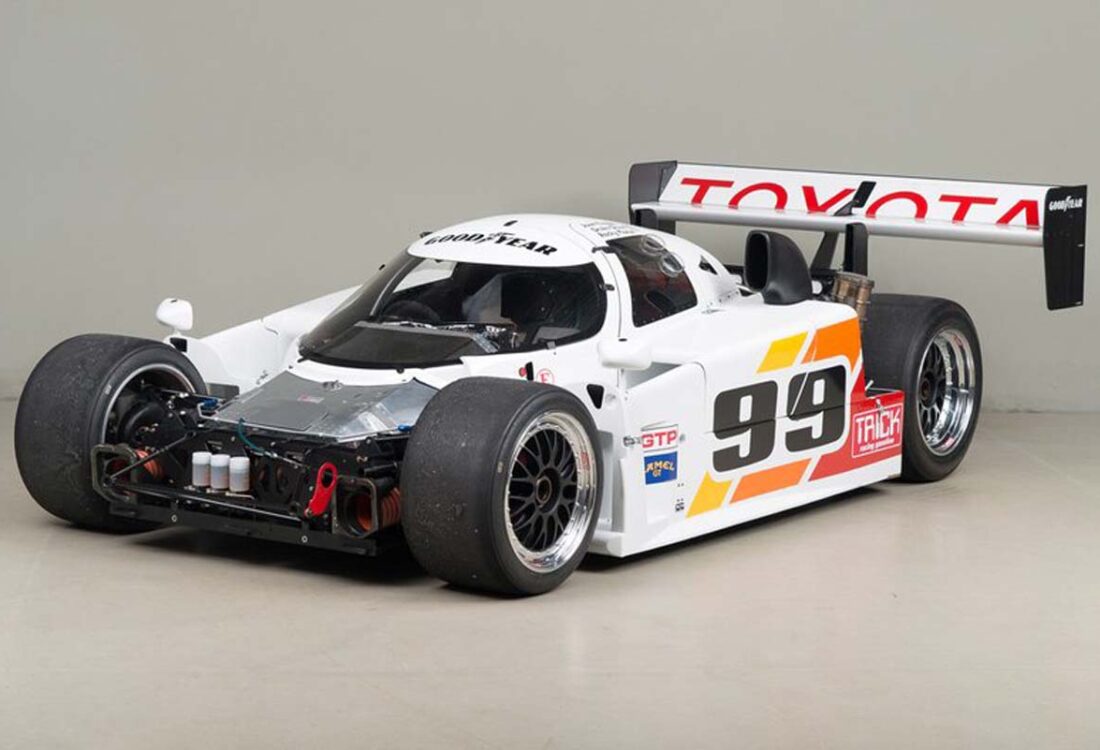
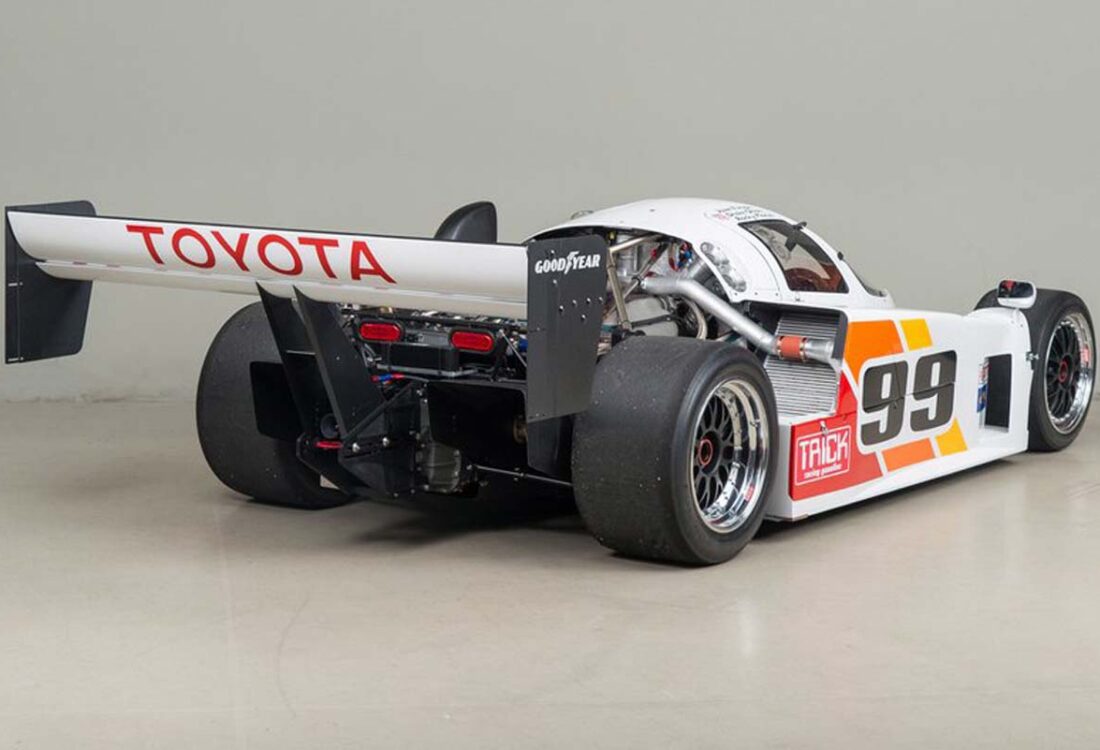
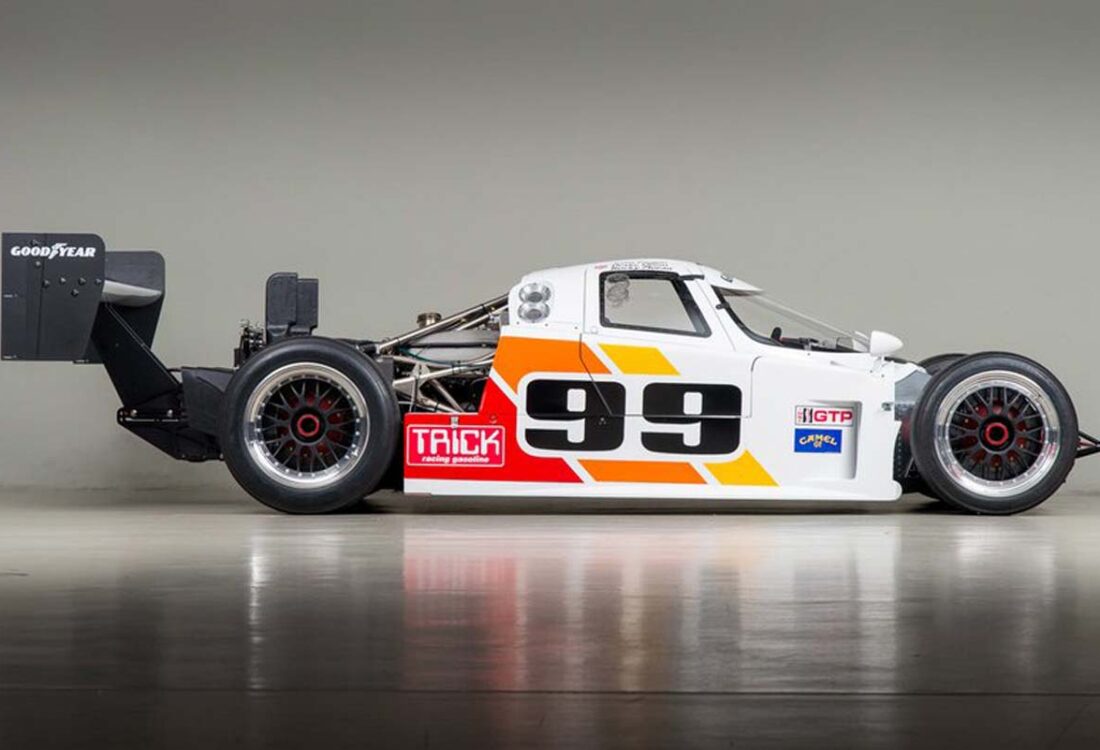
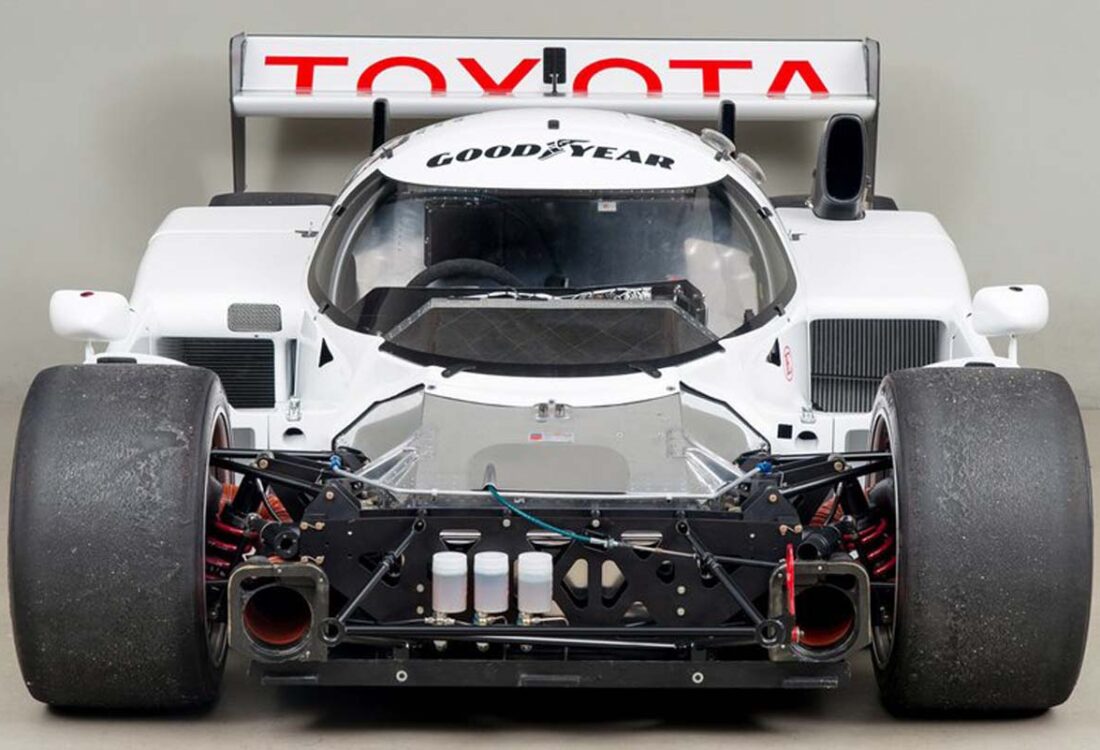
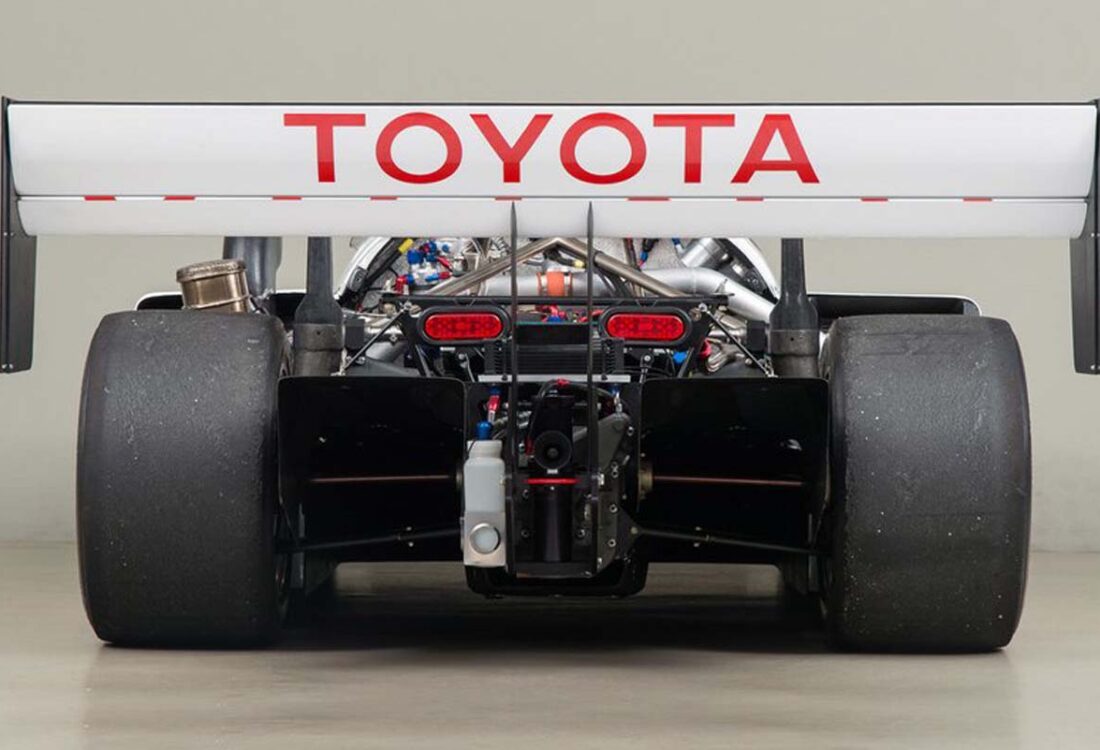
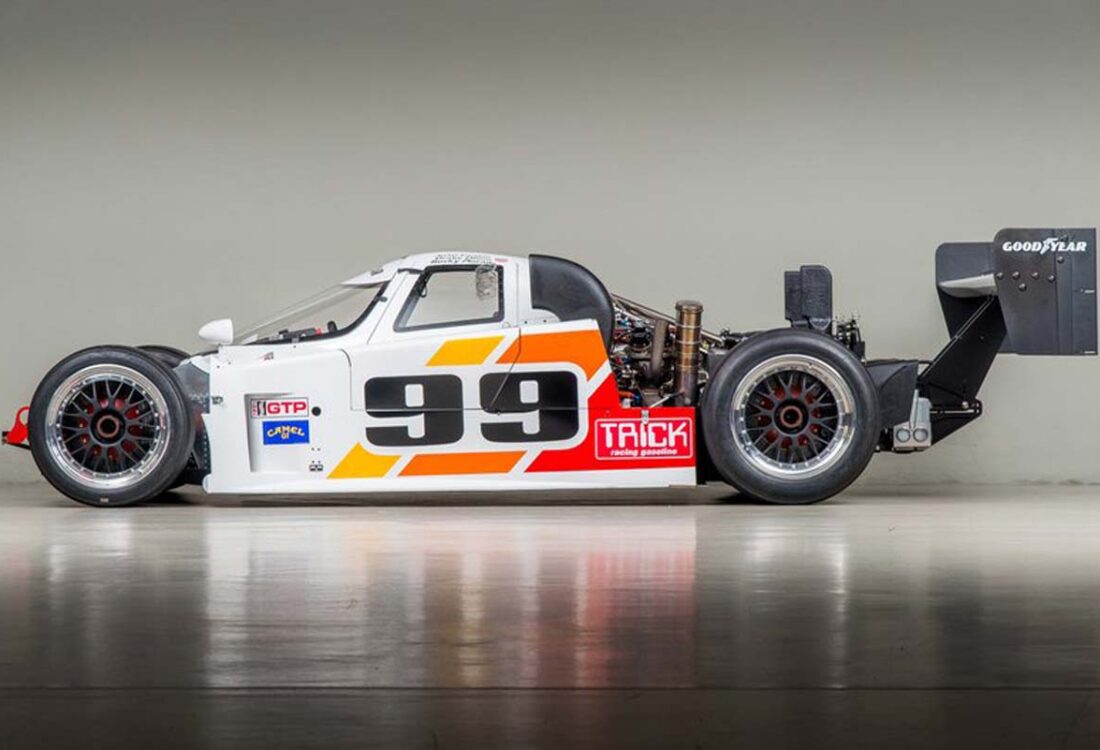
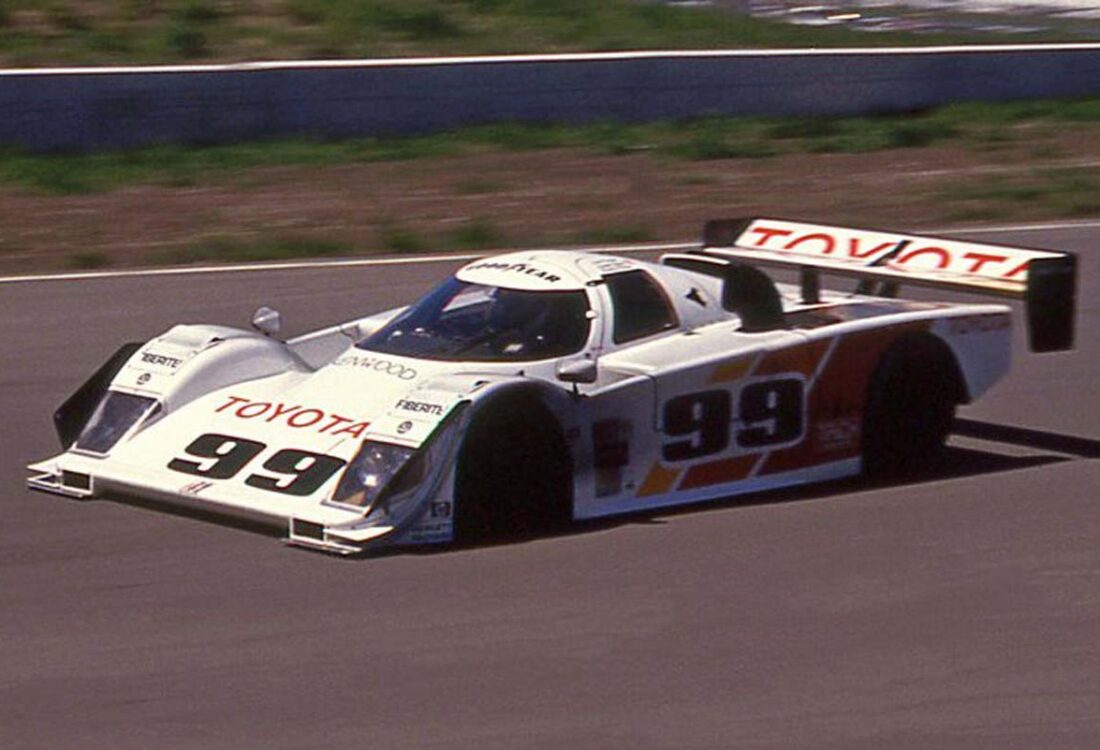
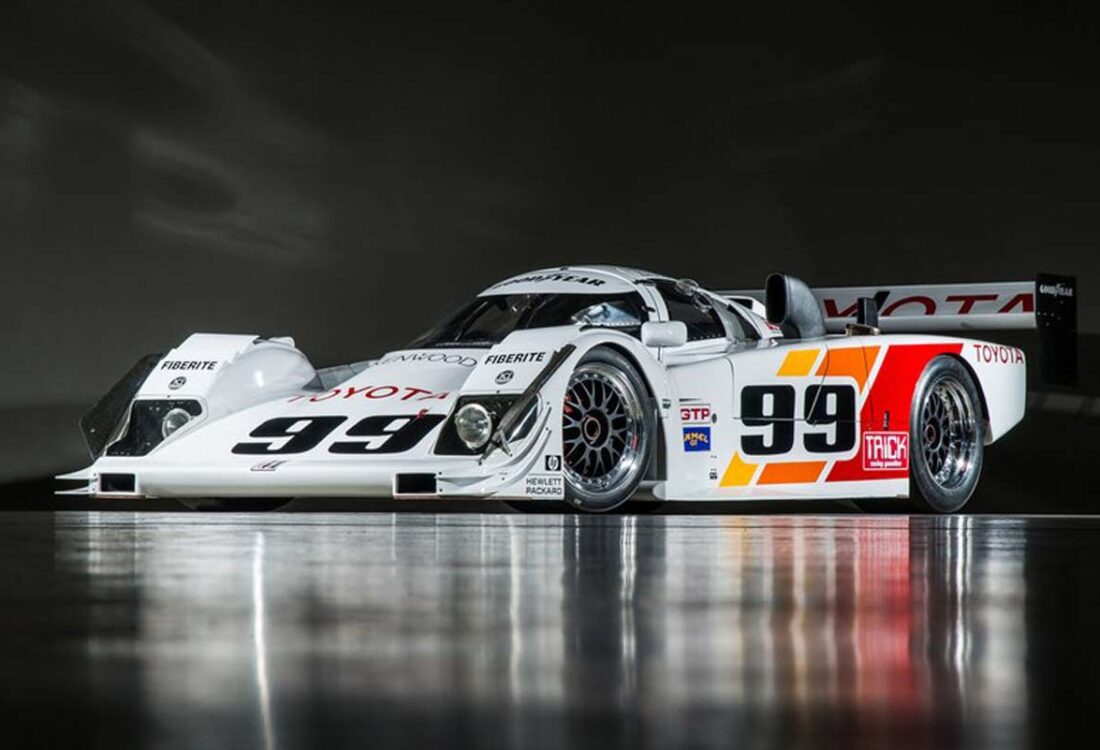
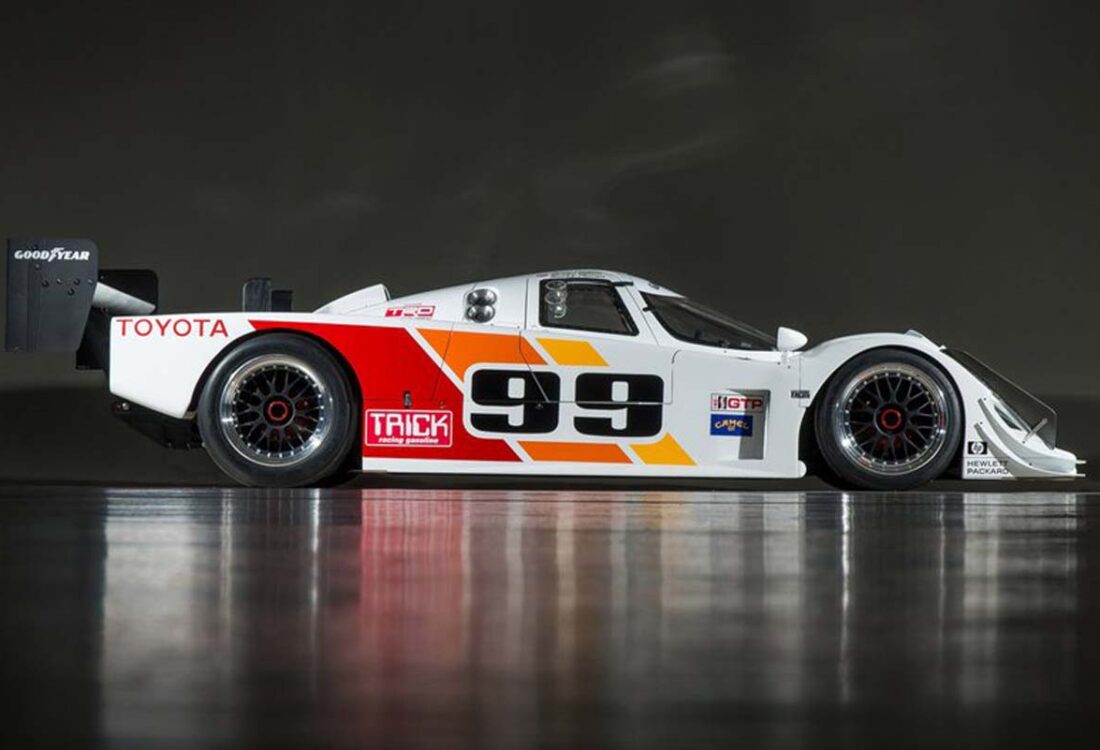
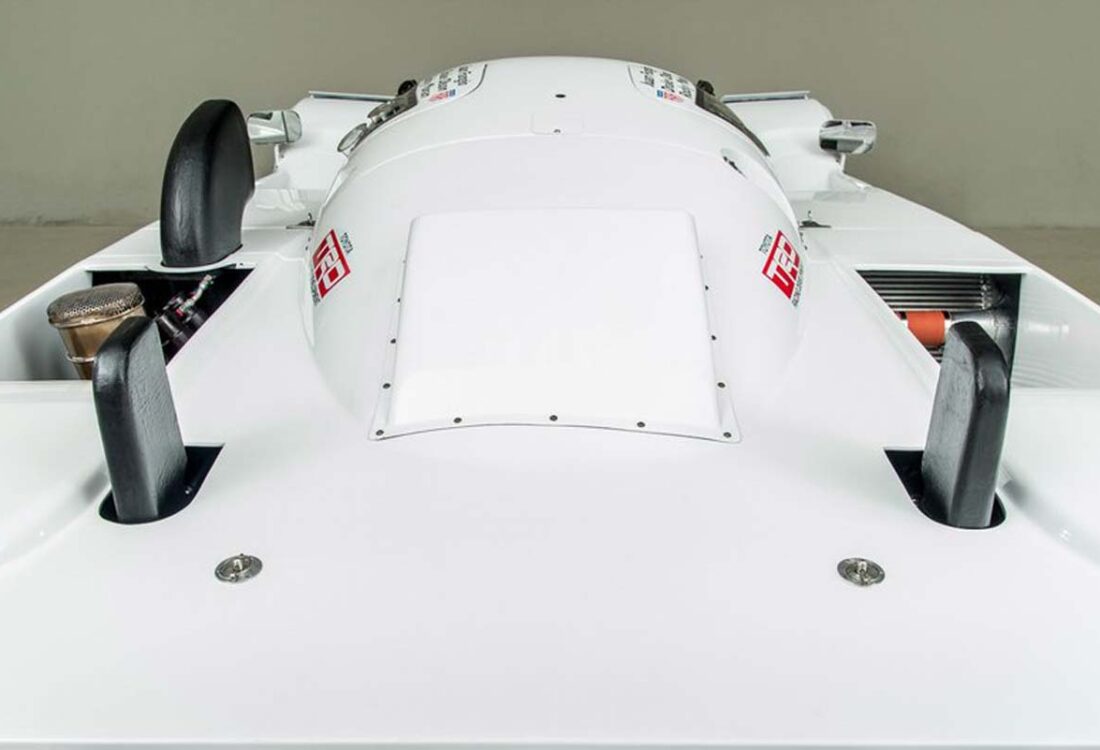
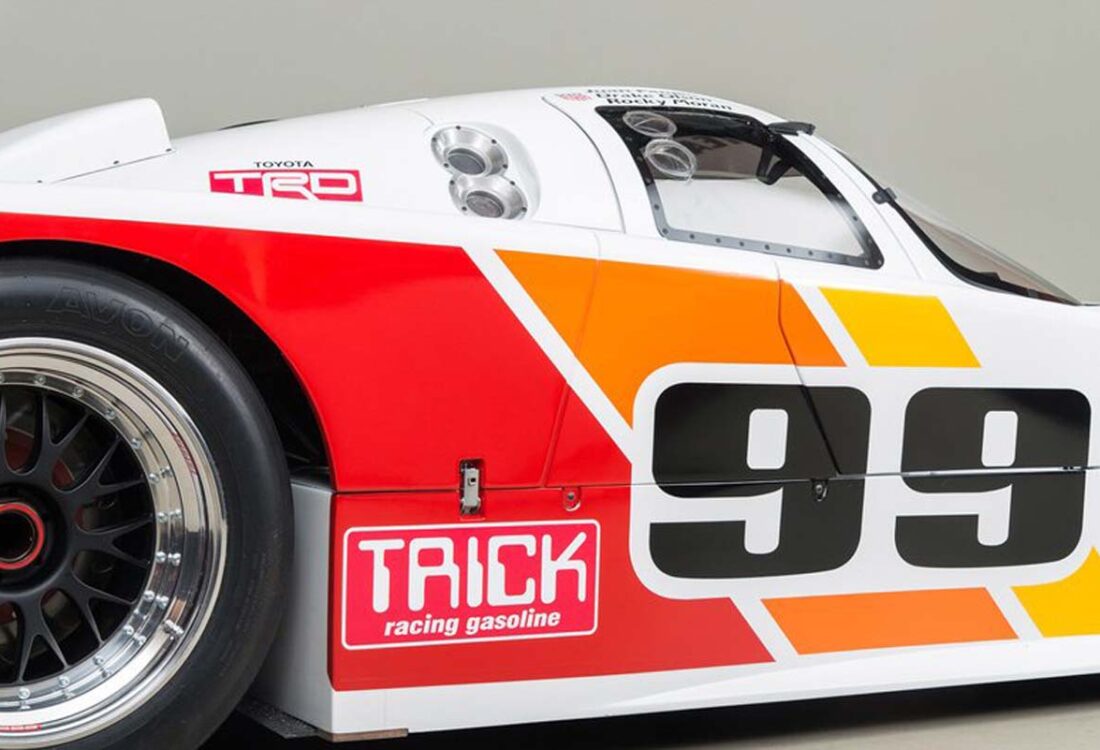
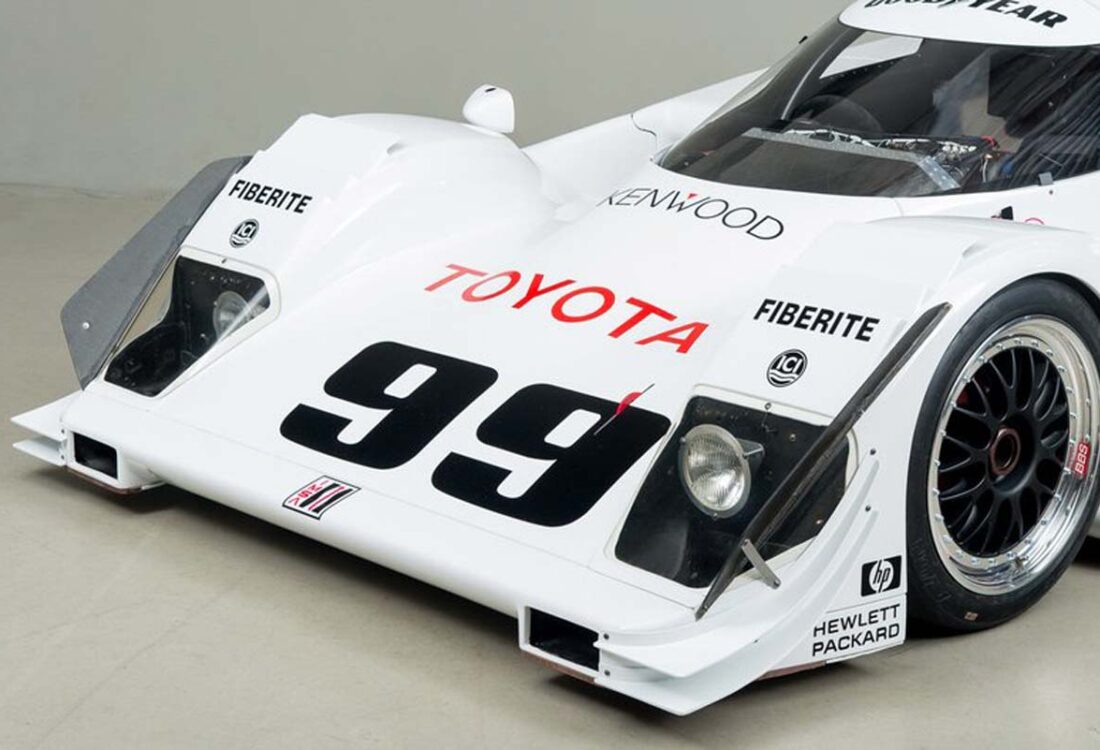

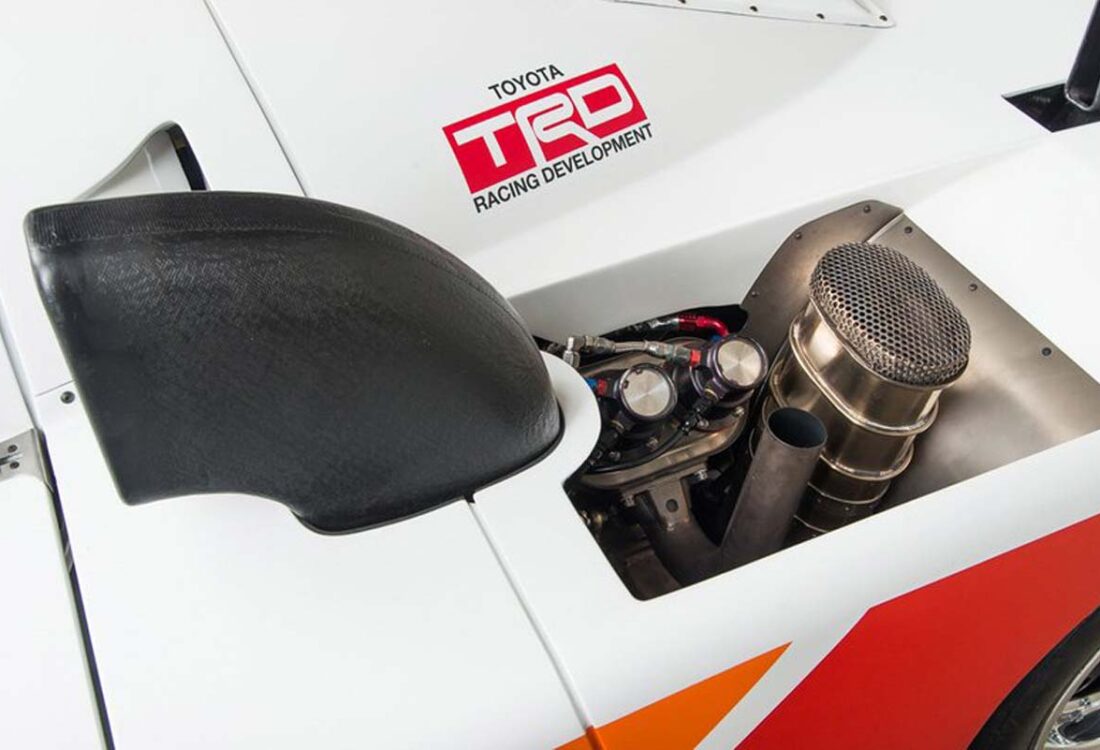
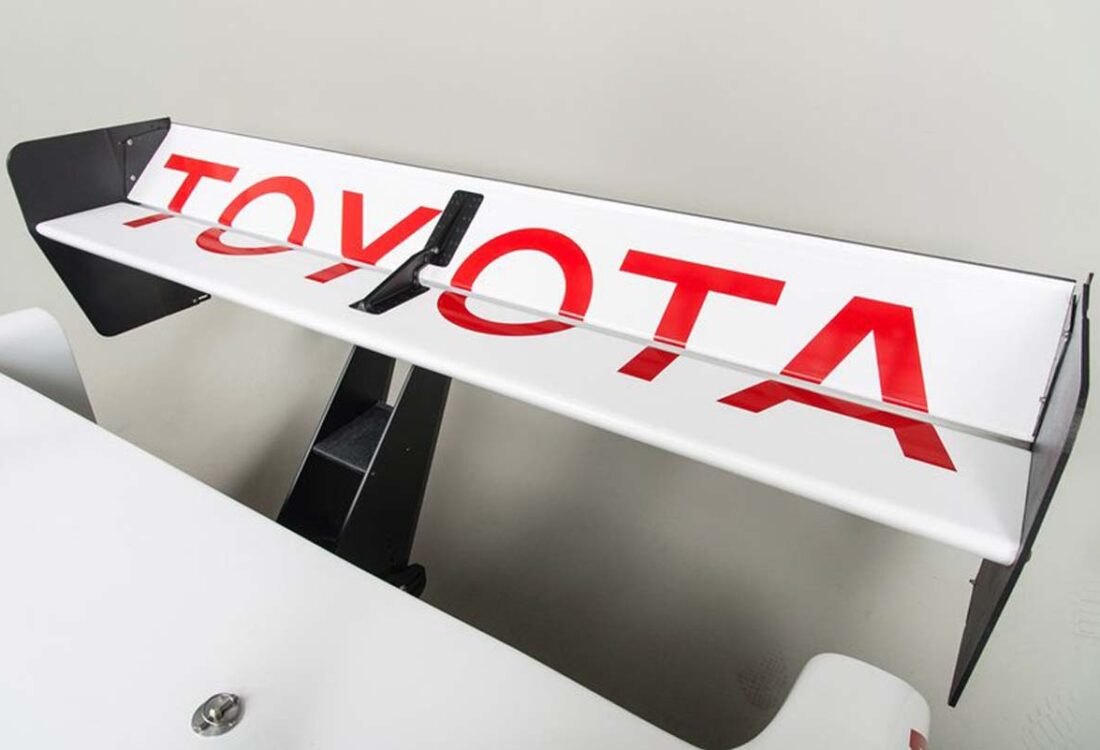
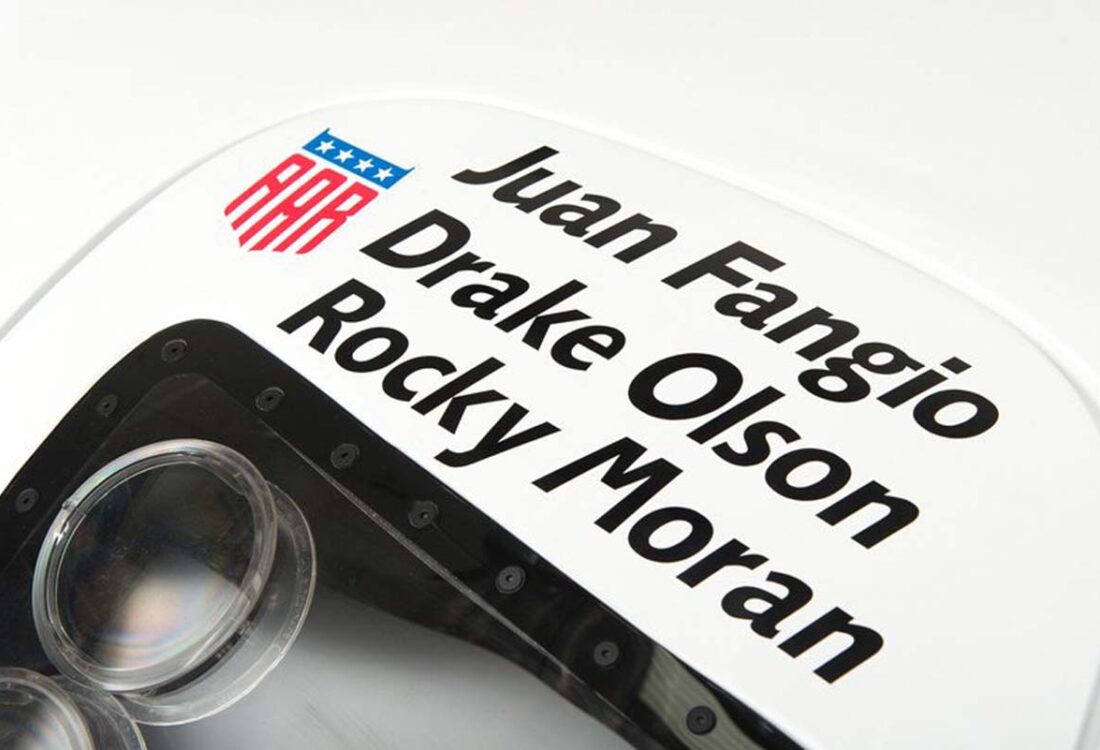
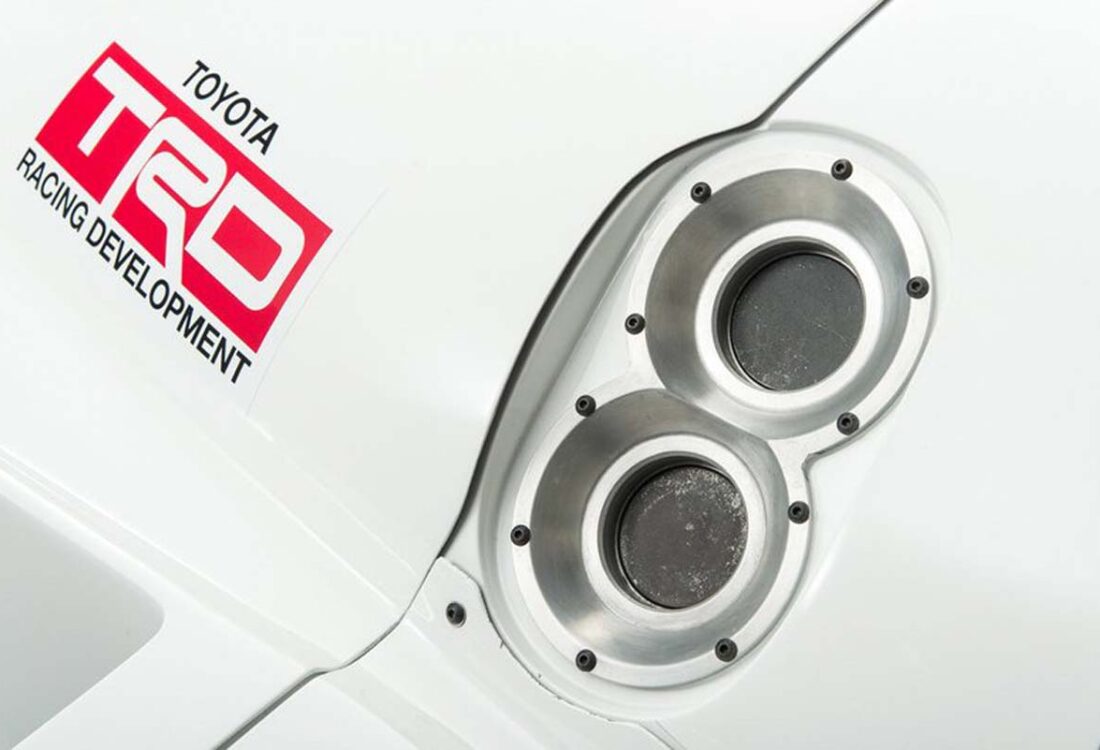
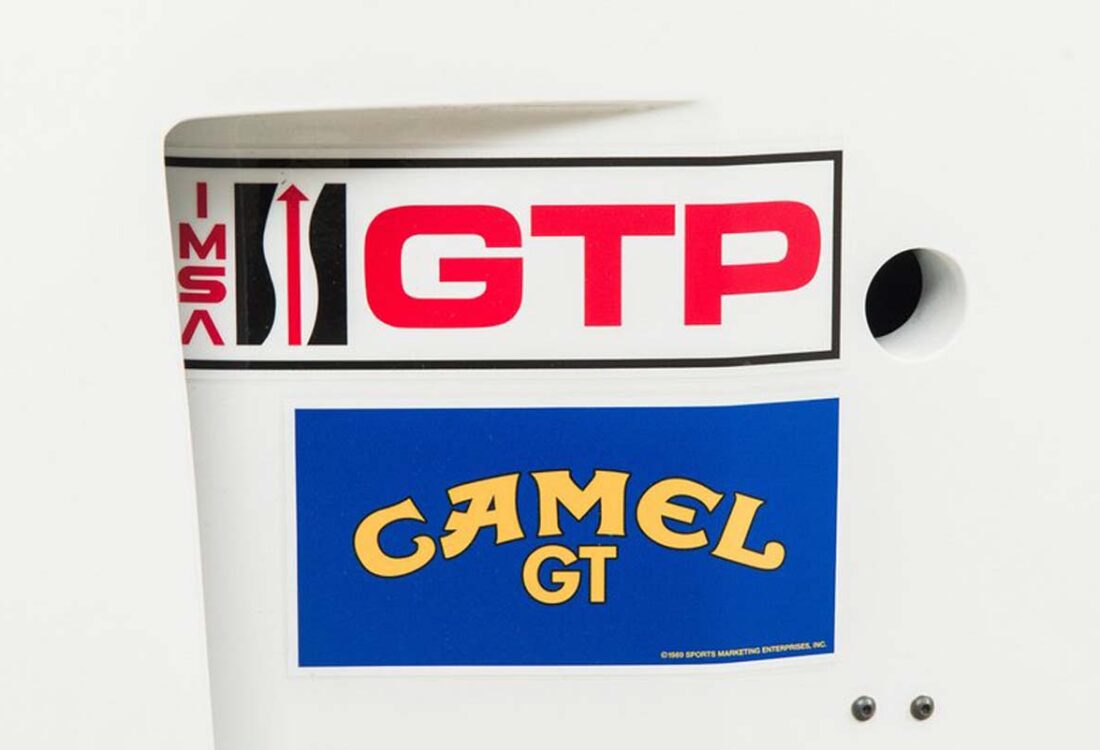
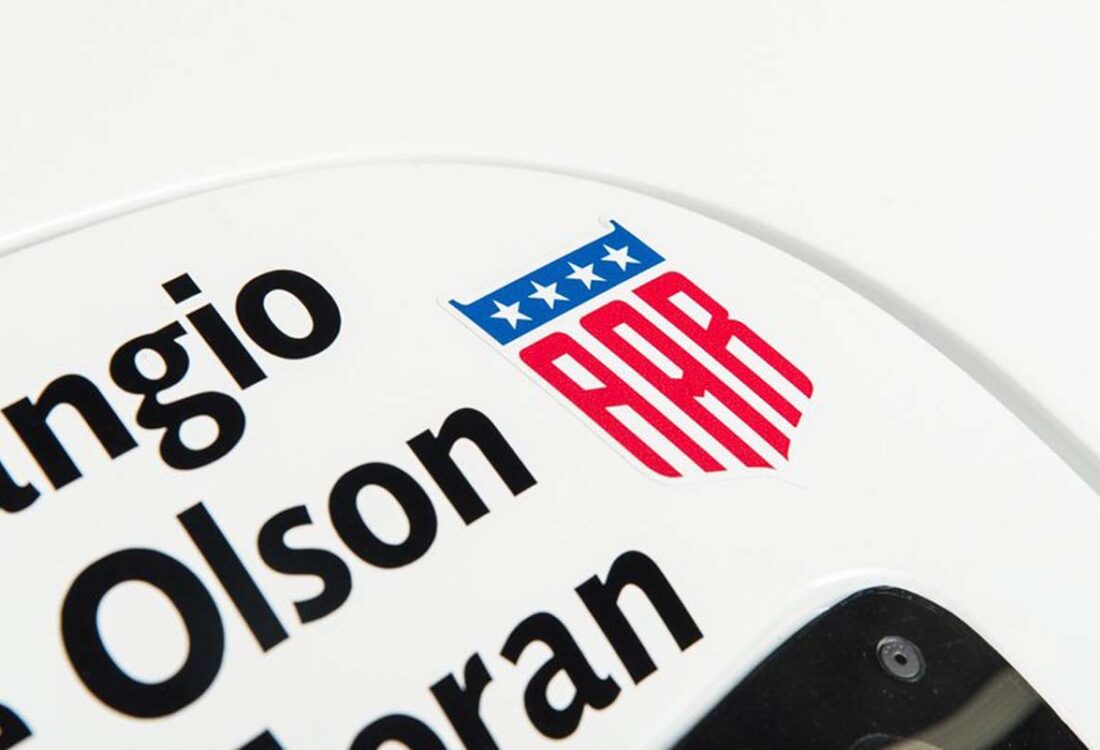
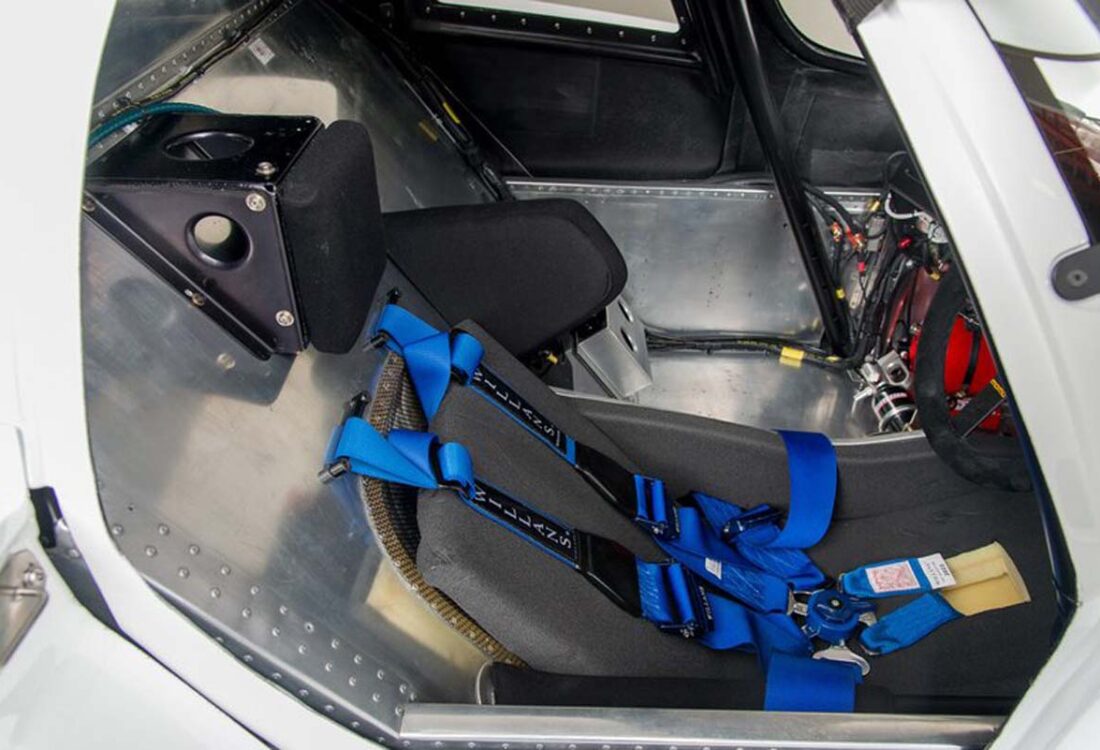
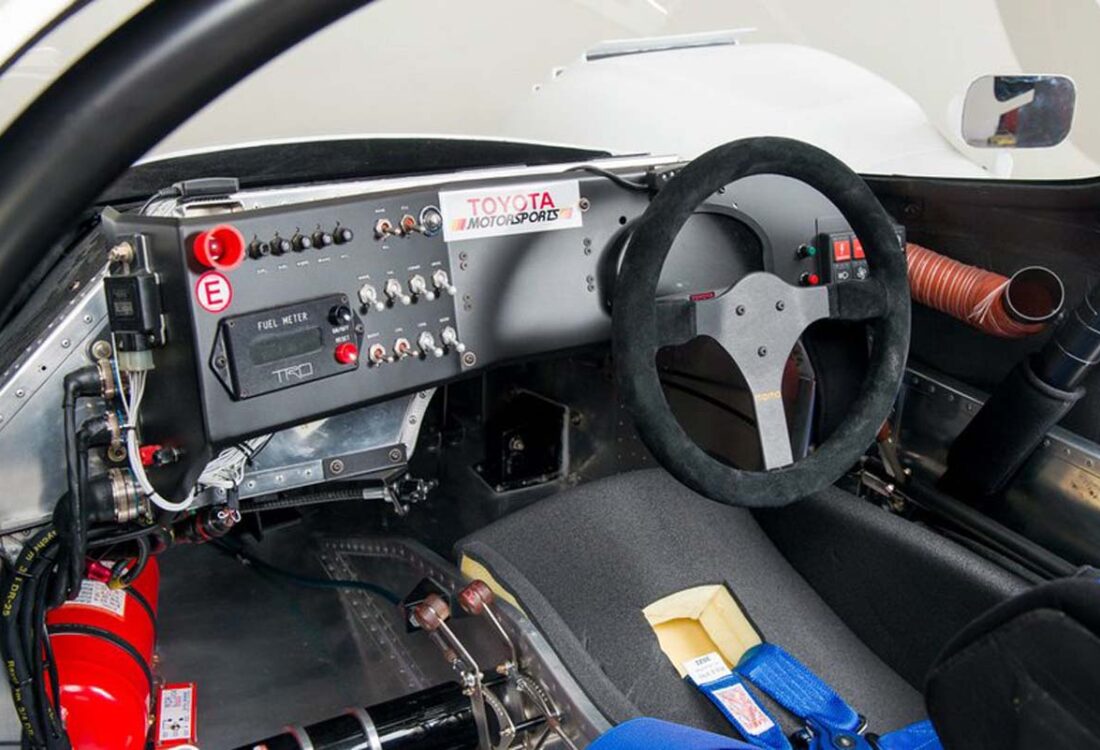
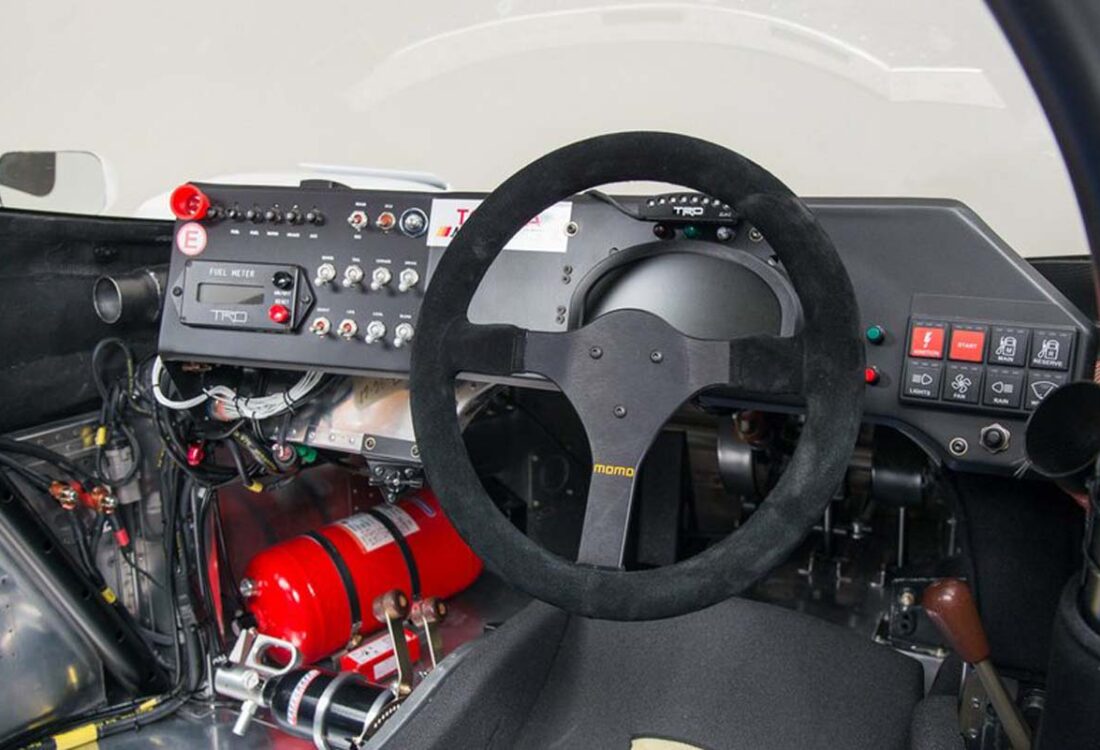
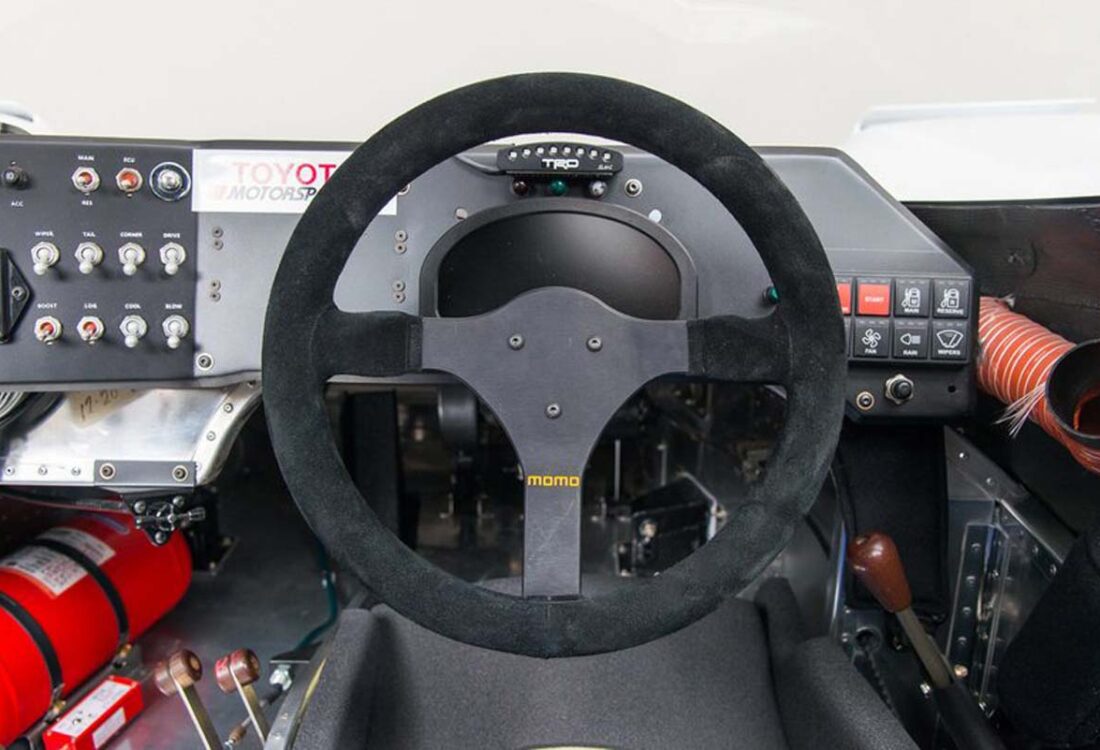
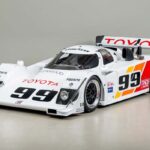
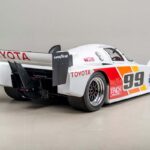
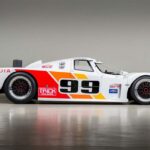

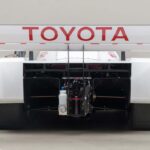
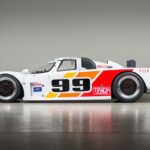
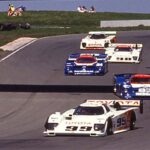
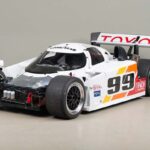
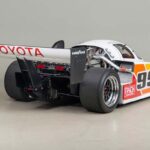
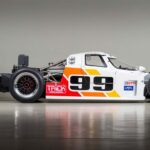

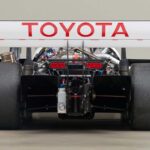
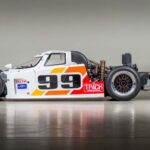
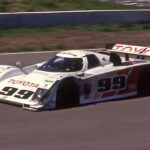
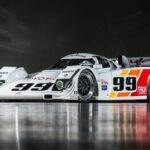
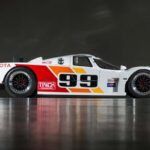
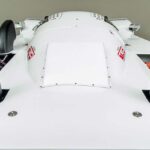
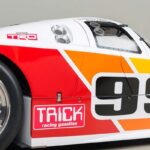
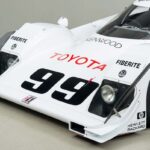
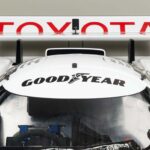
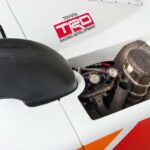
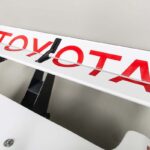
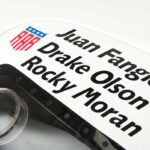
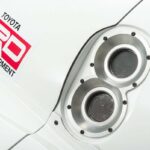
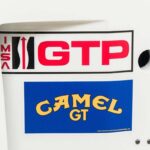
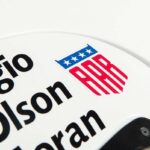
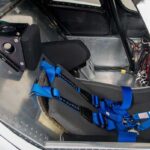
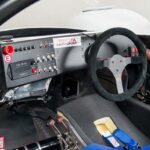
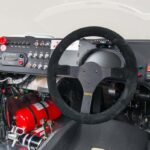
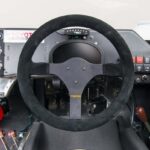








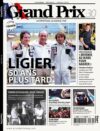



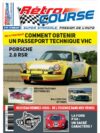
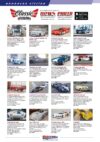
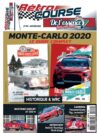
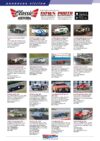

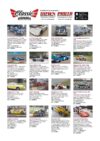
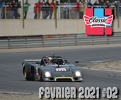

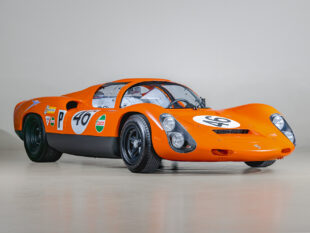
![JAGUAR LOW DRAG COUPE [ RECREATION]](https://www.classic-racing.fr/wp-content/uploads/2024/02/jaguar-low-drag-coupe-recreation-1-310x233.jpg)